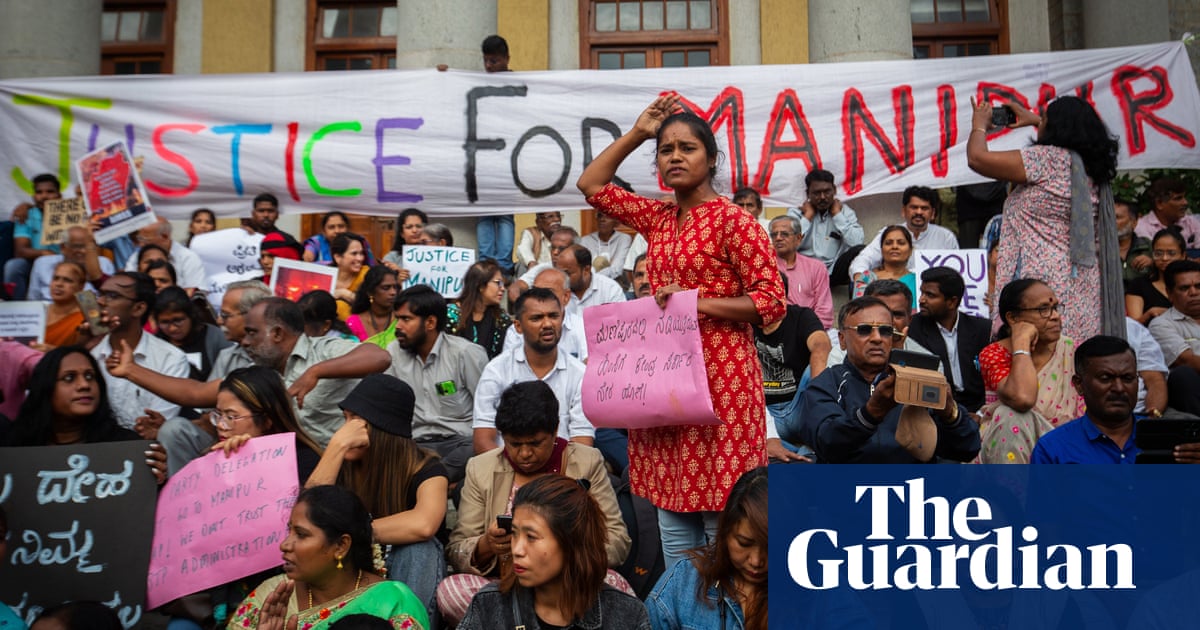
How did the conflict in Manipur begin?
Manipur is a state in north-east India with a population of more than three million. It has been embroiled in an ethnic conflict since early May, fought between the majority Meitei community and the minority Kuki tribe.
India’s north-eastern states have a history of ethnic rivalries dating back to before the country became independent in 1947. In Manipur, violence has erupted between the Meitei and the Kuki communities several times before.
Tensions have recently flared between the two communities again, driven in part by the Meitei-controlled state government. The government was accused of pursuing policies that discriminated against Kukis, including forced evictions that threatened the security of their land.
The violence was sparked by a court ruling in March that granted the majority Meitei “scheduled tribal status”, entitling them to the same economic benefits and quotas in government jobs and education as the minority Kuki.
It also allowed Meiteis to buy land in the hills, where the Kukis predominately live, further fuelling fears that their lands, jobs and opportunities would be taken away.
This prompted protests, mostly by Kuki student groups, which were met with violence. By early May, it had escalated into all-out violence between Kuki and Meitei groups.
In the state capital, Imphal, Meitei mobs targeted Kuki homes and attacked Kuki people who tried to flee the city for the hills, where they control much of the land.
The ruling was later stayed by the supreme court, which called it “factually wrong”, but by then the conflict had already taken hold.
How has the violence unfolded?
As the clashes spread, villages were burned down and more than 250 churches belonging to the Kuki community, who are Christian, were destroyed.
The state was swiftly bifurcated along ethnic lines, with the Meiteis in the valley and the Kukis in the hills, each defending their territory with their own militias, bunkers and sandbags, with a buffer zone created in the middle.
To enter the territory of the opposing tribe was soon considered to be a death sentence. Much of the violence has been fought with thousands of weapons stolen from police and army barracks.
As fake news and misinformation circulated, claiming that Meitei women had been raped and killed by Kukis, it was reported that Kuki women were being targeted in revenge attacks, which included rape, torture and assault. There have also been several reports of beheadings.
So far, more than 140 people have died in the violence and 60,000 have been displaced. The internet has been shut down by authorities in the state 18 times since the clashes began.
Though the state and central government – which are both ruled by the Bharatiya Janata party (BJP) – have claimed that the situation has begun to calm down, intermittent clashes have continued to erupt and those fighting on both sides have warned that Manipur remains on the brink of civil war.
The clashes have renewed and strengthened a longstanding demand by the Kukis for their own separate state, and Kuki groups now say they will not stop fighting until this is granted. The Meitei community and the state government fiercely oppose the creation of a separate Kuki state.
How has the government responded?
Even as the violence escalated, the response from the central BJP government was notably muted. Prime minister Narendra Modi was criticised for his months-long public silence on the conflict, as well as his ongoing refusal to visit Manipur.
India’s home minister, Amit Shah, visited Manipur at the end of May, but he failed to bring about a ceasefire between the groups or bring the two parties together for negotiation.
The Kukis are also demanding that the Manipur chief minister, who is from the Meitei tribe, steps down, and they have shunned the “peace committee” set up by Shah, which the chief minister is a part of.
Some allege that the Hindu nationalist Modi government is not stepping in to protect the Kukis, who are Christian, from the Meitei, who are Hindu.
This week, a viral video of two Kuki women being forcibly stripped naked, publicly groped and then allegedly gang raped by a Meitei mob caused outrage across the country and finally prompted Modi to comment on the issue.
Speaking at the opening of parliament on Thursday, Modi said that “what happened to the daughters of Manipur can never be forgiven” and that the “entire country had been shamed by the incident”.
However, he has faced criticism for not addressing the broader conflict or referring to those who have died in the fighting.
The footage also prompted the supreme court to chastise the government for not getting the situation in Manipur under control. Chief justice Dhananjaya Chandrachud said: “It’s time that the government really steps in and takes action because this is simply unacceptable.”
The conflict has shone a light on the failures of the police and authorities to act on the cases of violence that have been reported in Manipur.
It wasn’t until the video of the assault of the women went viral that police arrested four men, more than 70 days after the attack took place.
"conflict" - Google News
July 22, 2023 at 12:27AM
https://ift.tt/DrAWlzL
Manipur: why is there conflict and how is the government responding? - The Guardian
"conflict" - Google News
https://ift.tt/ezsKaAX
https://ift.tt/AJ0IOWP
Bagikan Berita Ini














0 Response to "Manipur: why is there conflict and how is the government responding? - The Guardian"
Post a Comment